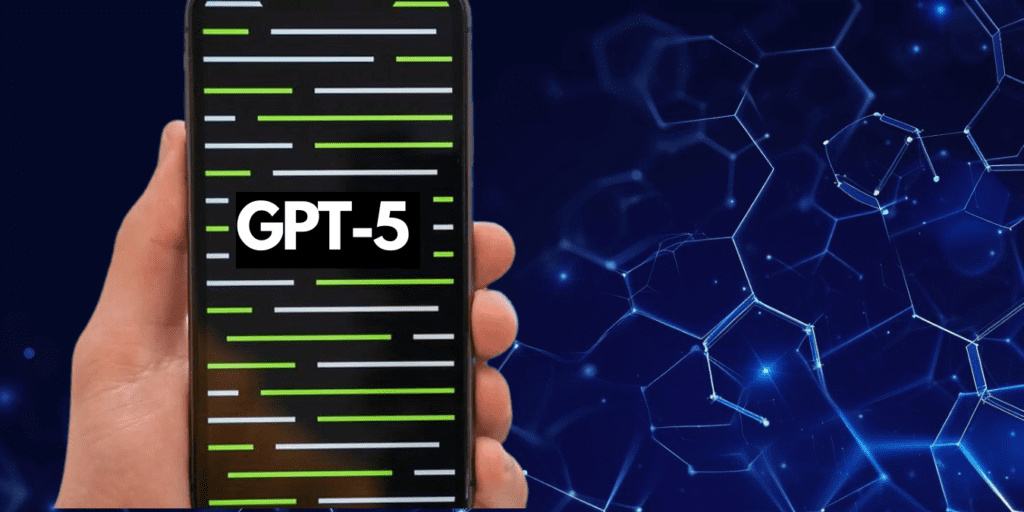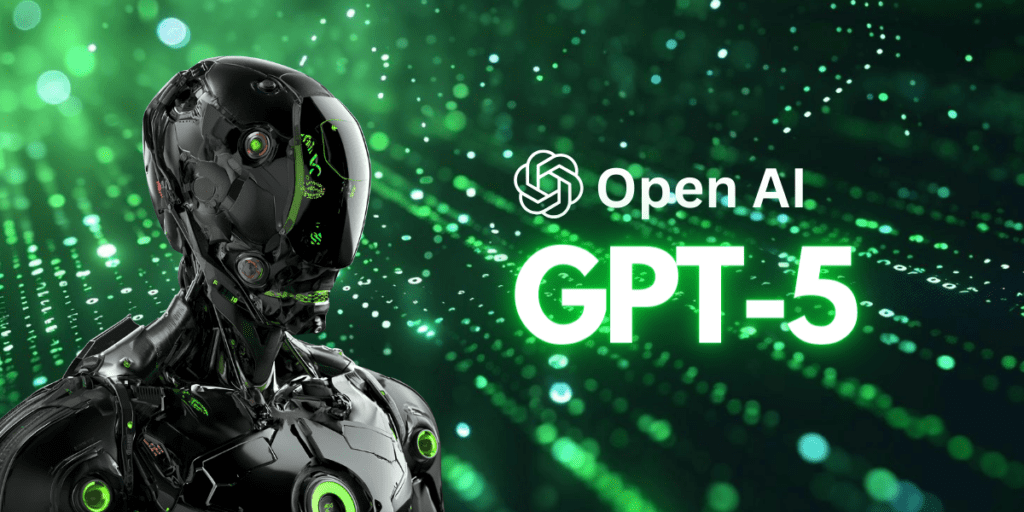OpenAI stands as a beacon of innovation, having charted a path from the inception of generative AI models to the brink of launching its most advanced iteration yet: GPT-5. With each iteration surpassing its predecessor in complexity and capability, the anticipation for GPT-5 has reached a fever pitch.
According to recent reports, the tech world is eagerly awaiting its arrival, slated for the summer months. This next leap forward promises to significantly enhance the way we interact with AI, pushing the boundaries of what’s possible in natural language processing and beyond.
As we stand on the cusp of this groundbreaking release, let’s delve into what GPT-5 brings to the table, guided by insights from OpenAI CEO Sam Altman and the buzz from industry insiders. The journey from GPT-4 to GPT-5 symbolizes not just technological advancement but a vision of the future where AI’s potential is boundless.
OpenAI’s GPT-5
The tech community is abuzz with anticipation as OpenAI gears up for the launch of its latest AI marvel, GPT-5. Building on the formidable legacy of GPT-4, which set new benchmarks in natural language processing, GPT-5 is poised to redefine the boundaries of artificial intelligence yet again.
Industry insiders and AI enthusiasts are keenly awaiting the mid-year release, speculating on the suite of advancements and the potential impact on various sectors, from healthcare and education to entertainment and customer service.
The build-up to GPT-5’s release has been marked by a blend of excitement and speculation, fueled by OpenAI CEO Sam Altman’s hints about “an amazing new model” set to launch this year.
While details remain under wraps, the promise of enhanced capabilities over GPT-4 has sparked discussions on forums, social media, and industry reports, pondering the technical improvements and new features that GPT-5 might bring to the table.
Reports suggest that OpenAI has been conducting demonstrations of GPT-5 to select enterprise customers, offering glimpses into the enhanced user experience and more sophisticated interactions possible with the upcoming model.
This targeted approach not only underscores the strategic importance of GPT-5 to OpenAI’s business model, particularly in the realm of enterprise sales but also signals the company’s confidence in the advancements embodied by the new model.
Amidst this heightened anticipation, the AI community is also acutely aware of the importance of safety and ethical considerations in the deployment of such powerful technology.
OpenAI’s comprehensive approach to training and safety testing, including an internal “red teaming” process, reassures stakeholders about the company’s commitment to responsibly advancing AI capabilities.

What to Expect from GPT
The imminent arrival of GPT-5 from OpenAI has stirred significant excitement and curiosity about the enhancements and new capabilities it will bring to the field of artificial intelligence. With the success of its predecessor, GPT-4, setting a high benchmark, expectations for GPT-5 are understandably lofty.
It is expected to further refine the nuanced understanding and generation of human language. This means even more sophisticated dialogue, more accurate interpretations of queries, and an ability to generate content that is closer to human-produced text in terms of coherence, relevance, and creativity.
One of the most anticipated advancements is the expansion of multimodal capabilities. GPT-4 introduced the ability to interpret and generate content based on text and images.
It is expected to push these boundaries further, possibly incorporating video and audio understanding and generation, offering a more comprehensive multimodal AI experience.
A significant focus for GPT-5 will likely be on improving factual accuracy and reducing instances of “hallucination” — where the AI generates plausible but incorrect or nonsensical information.
Enhancements in data processing and validation mechanisms may lead to a version of GPT that users can trust to provide more accurate and reliable outputs.
It is anticipated to exhibit improved contextual awareness, allowing for more relevant and precise interactions over longer conversations.
This would not only make GPT-5 a more effective tool for applications requiring sustained engagement, like tutoring or complex customer service scenarios but also enhance its ability to understand and integrate context in content creation tasks. As AI models grow in capabilities, so does the computational power needed to run them.
GPT-5 may introduce optimizations that improve efficiency, making it both more environmentally friendly and accessible to a broader range of users by lowering the computational costs associated with operating such advanced AI.
Given the increasing power of AI models, ethical use and safety will remain paramount. Expect GPT-5 to come with enhanced safety features and guidelines to prevent misuse.
This might include more robust content filters, improved mechanisms for detecting and mitigating bias, and stronger safeguards against generating harmful content.
It will not be true Artificial General Intelligence, its advancements will likely be seen as a significant step towards achieving an AI with the ability to understand, learn, and apply knowledge across a wide range of tasks and disciplines, much like a human being.
The potential of GPT-5 extends beyond these technical advancements. It represents a broader vision for the future of AI — one that is more integrated into daily life, more capable of handling complex tasks, and closer to interacting on a human level.
Safety Measures
The development and implementation of GPT-5 by OpenAI underscore a monumental leap forward in AI capabilities, coupled with an intensified focus on safety and ethical considerations.
Given the increased power and potential impact of such advanced AI models, OpenAI is implementing comprehensive development and safety measures to ensure GPT-5’s responsible use and deployment.
The training phase for GPT is both extensive and intensive, leveraging vast datasets to enhance the model’s understanding and generative abilities.
This phase aims to equip GPT-5 with a nuanced comprehension of language, context, and multimodal inputs, ensuring a broad and deep knowledge base.
Beyond the raw data, OpenAI is committed to refining the model’s ethical compass, instilling values that guide its responses to align with societal norms and ethics.
A critical component of GPT development is the internal “red teaming” process. This involves a dedicated team working to identify, exploit, and subsequently address potential vulnerabilities within GPT-5. The goal is to foresee and mitigate ways the AI could be misused or generate harmful content, ensuring a safer public release.
OpenAI places a significant emphasis on reducing biases within GPT-5, conducting rigorous testing to identify and correct instances where the model might produce biased or discriminatory outputs. This is part of a broader effort to promote fairness and inclusivity in AI.
To further safeguard against misuse, GPT-5 will likely include enhanced content filters that prevent the generation of harmful or sensitive material. Additionally, OpenAI is expected to provide clear usage guidelines, helping users understand the best practices for interacting with and deploying the model.
Understanding the broader implications of such advanced technology, OpenAI engages with the wider AI research community to share insights, discuss ethical considerations, and explore best practices for AI development and deployment.
This collaborative approach helps in setting industry-wide standards for safety and ethics in AI. Even after GPT-5’s release, OpenAI plans to continuously monitor the model’s performance and user interactions.
This allows for ongoing adjustments and improvements, ensuring that GPT-5 remains a positive force in technology and society. Feedback mechanisms will be crucial in this process, enabling users to report concerns or problematic outputs for further refinement.
The development of GPT-5 is not just a technical endeavour but a societal one, with OpenAI considering the global impact of its AI models.
This includes discussions on the ethical use of AI, the potential for job displacement, and the importance of ensuring that AI benefits all of humanity, not just a privileged few.

GPT-5’s Business Implications
The upcoming release of GPT-5 by OpenAI is not just a significant leap in technological advancement; it also carries profound business implications.
The introduction of such an advanced AI model is expected to transform industries, redefine competitive landscapes, and create new opportunities for innovation and efficiency.
GPT -5’s improved understanding and generation of human language will enable businesses to provide more sophisticated and nuanced customer service through chatbots and virtual assistants.
This could significantly reduce response times, improve customer satisfaction, and lower costs associated with customer support.
With its advanced generative capabilities, GPT-5 will be a powerful tool for content creation, helping businesses produce high-quality written content, marketing materials, and reports with greater efficiency.
This can help companies keep up with the content demands of digital marketing and online presence without compromising on quality.
GPT-5’s multimodal capabilities and enhanced understanding of complex queries will enable businesses to innovate in product and service design.
Companies could use GPT-5 to analyze customer feedback and market trends more effectively, leading to more user-centric product development and innovation.
GPT-5 could automate and optimize various operational tasks, from data analysis and processing to drafting emails and creating documentation. This would free up human resources for more strategic tasks, thereby improving productivity and operational efficiency.
The capabilities of GPT-5 may lead to the emergence of new business models, particularly in sectors that rely heavily on data analysis, personalized customer experiences, and creative content. Businesses that adapt quickly to leverage GPT-5’s capabilities could gain a significant competitive edge.
As businesses adopt GPT-5, they will also need to navigate ethical and privacy considerations, especially in handling sensitive data and ensuring that AI-generated content aligns with societal norms and regulations. Companies will need to establish robust guidelines and practices to address these concerns.
Industries that are slow to adapt to AI advancements risk being disrupted by competitors that effectively leverage GPT-5 to innovate and streamline operations.
The broad applicability of GPT-5 across various sectors—from finance and healthcare to education and entertainment—means that its impact will be wide-ranging.
The introduction of GPT-5 will likely increase demand for professionals with AI and machine learning skills as businesses seek to integrate and maximize the model’s capabilities. This could accelerate investment in training and development in these areas.
The Future of AI with GPT-5
With GPT-5 on the horizon, OpenAI is poised to push the boundaries of artificial intelligence into new frontiers, signalling a future where AI’s potential is both expansive and intricately woven into the fabric of society.
This leap forward not only exemplifies technological prowess but also sets the stage for a deeper exploration into the essence of intelligence, creativity, and the human-AI relationship. Here are several key aspects that outline the future of AI with the introduction of GPT-5:
GPT-5 promises to redefine the dynamics of human-AI interaction, offering more intuitive, natural, and productive engagements.
With advancements in language understanding and generation, AI could become a more integrated partner in creative processes, problem-solving, and decision-making, blurring the lines between human and machine intelligence.
The integration of GPT-5 into various tools and platforms will likely accelerate the penetration of AI in daily life and work, making smart assistants more capable, enhancing personalized learning platforms, and enabling more sophisticated data analysis tools.
This integration will make AI an indispensable tool across professions and industries. As GPT-5 enhances AI’s capabilities, it also amplifies the ethical, safety, and societal considerations that come with deploying advanced AI models.
Issues surrounding data privacy, misinformation, AI bias, and the digital divide will require concerted efforts from policymakers, technologists, and society to address.
The development and implementation of GPT-5 will likely be accompanied by increased dialogue on these fronts, pushing for frameworks and regulations that ensure the responsible use of AI.
The release of GPT-5 is expected to act as a catalyst for further research and innovation in the field of AI. It could unlock new research areas, particularly in understanding the workings of large language models, exploring the limits of multimodal AI, and advancing towards artificial general intelligence.
The advancements heralded by GPT-5 will bring both challenges and opportunities in employment and education.
While automation may displace certain job functions, it will also create demand for new skills and roles, particularly in AI development, ethical AI oversight, and AI-integrated fields.
Education systems will need to adapt, emphasizing digital literacy, critical thinking, and lifelong learning to prepare individuals for a rapidly changing job market.
While GPT-5 itself is not AGI, its development represents a significant step towards achieving a level of AI that can understand, learn, and perform any intellectual task that a human being can.
GPT-5’s advancements will contribute to the ongoing dialogue and research into the feasibility, implications, and ethical considerations of AGI.

Final Thoughts
As OpenAI stands on the precipice of launching GPT-5, the anticipation and speculation surrounding its capabilities and impact reflect a broader curiosity and optimism about the future of AI.
This next-generation model, building upon the foundational successes of its predecessors, is poised to not only advance the technical boundaries of what AI can achieve but also challenge our collective understanding of the roles artificial intelligence can play in society, business, and daily life.
The journey toward GPT-5 represents more than just a leap in AI development; it symbolizes the ongoing quest to harmonize human creativity with the raw computational power of machines.
As we ponder the implications of GPT -5’s arrival—from transforming customer service and content creation to reshaping the very landscape of employment and education—the conversation extends beyond the confines of technology into the realms of ethics, policy, and human values.
The development and deployment of GPT-5 underscore the critical importance of navigating the ethical, privacy, and safety challenges that accompany such powerful tools.
The collective efforts of researchers, developers, and policymakers will be crucial in steering the immense potential of GPT-5 toward outcomes that enhance human capabilities, foster innovation, and address some of the most pressing challenges facing society today.
As we await the unveiling of GPT-5, it’s clear that its impact will be as much about the questions it raises as the answers it provides.
The future of AI, as glimpsed through the lens of GPT-5, is not just a testament to human ingenuity but a reminder of our responsibility to guide that ingenuity towards creating a world that reflects our highest aspirations.
In this moment of anticipation, we stand at the threshold of a new era in AI, ready to explore the vast possibilities and navigate the challenges that lie ahead.


